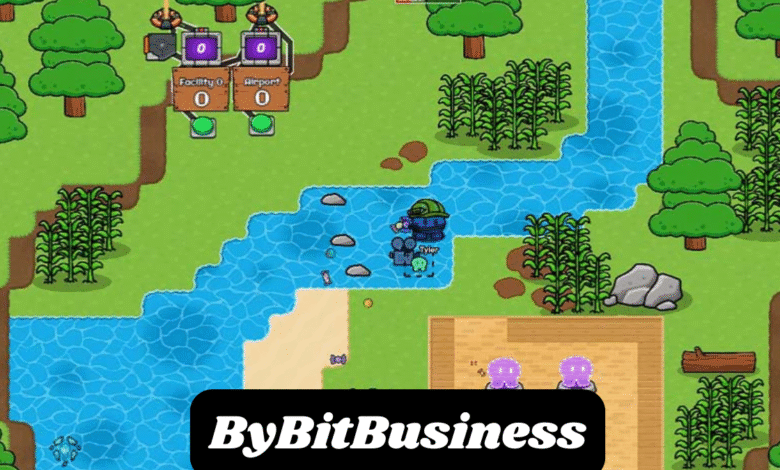Gimkit Host: A Deep Dive into Interactive Learning Facilitation

Understanding the Concept of a Gimkit Host
The term “Gimkit host” refers to the individual who initiates and controls a live Gimkit game session. This role is often fulfilled by a teacher, trainer, or event coordinator aiming to engage a group of participants—usually students or learners—through an interactive quiz-based game. Gimkit, designed as a gamified learning platform, has grown in popularity due to its dynamic format, real-time feedback, and capacity to transform traditional question-and-answer exercises into engaging competitions. As the host, one is not just a game initiator but also a guide, facilitator, and sometimes a performer who steers the educational experience.
The power of a Gimkit host lies in their ability to manage the pacing, customize the content, and adapt the game format to suit their audience. Whether in classrooms, online workshops, or corporate training settings, the host ensures the platform is used to its full potential. A strong host helps transform a regular lesson into a memorable experience, leveraging the interactivity of Gimkit to enhance comprehension and retention.
The Role of the Gimkit Host in Educational Environments
In classroom settings, the Gimkit host is usually the teacher. This person selects the quiz set, decides on the game mode, and monitors the student progress as they play. Hosting a Gimkit session isn’t just about launching the game—it requires strategic thinking. Teachers may tailor question sets to current learning objectives, schedule the timing of sessions to align with review weeks or assessments, and monitor in-game performance to identify learning gaps.
A Gimkit host also influences classroom dynamics. By encouraging participation and setting the tone of the game—whether competitive or collaborative—they shape how students interact with one another and with the content. Gamification elements like earning virtual currency, investing in upgrades, or playing team-based modes require careful facilitation to ensure balance and fairness. Good hosts recognize when to allow free play and when to step in to moderate behavior or provide guidance.
Hosting in Virtual and Hybrid Classrooms
With the rise of remote and hybrid learning, the function of a Gimkit host has extended beyond physical classrooms. In virtual settings, hosting involves navigating both the platform and video conferencing tools. A host must manage screen sharing, explain the game interface to new users, and troubleshoot tech issues, all while maintaining enthusiasm and focus.
Despite the distance, Gimkit’s design makes it ideal for virtual interaction. As a host, engaging students remotely requires clear communication and creative strategies to keep attention levels high. Breakout groups, digital rewards, and shout-outs for performance can help bridge the physical gap between students and hosts. The role of a Gimkit host becomes increasingly complex in these contexts, demanding digital fluency and adaptability.
Preparing to Be an Effective Gimkit Host
Preparation is key to effective hosting. A Gimkit host needs to have a good understanding of the topic being tested, the question set’s difficulty level, and the players’ current knowledge. Hosts often start by either creating their own custom question sets or browsing the extensive library of pre-made Kits. Reviewing and editing the questions ensures alignment with learning objectives.
Moreover, hosts need to decide on the game mode best suited for their goals. Gimkit offers a variety of modes, such as Classic, Team Mode, Humans vs. Zombies, and Trust No One. Each mode has different mechanics and objectives, which can significantly alter the learning experience. The host’s choice of mode should align with the class size, content type, and desired outcome—be it revision, formative assessment, or fun learning.
Sound logistical planning also enhances hosting success. Ensuring devices are compatible, internet connections are stable, and participants understand the rules beforehand minimizes disruptions. A good host anticipates technical hiccups and prepares backup plans.
Features Accessible to a Gimkit Host
Gimkit offers several tools and features designed to support hosts. When logged in as the host, one gains access to game customization settings, including question randomization, time limits, point values, and in-game bonuses. Hosts can control when a game starts, monitor the leaderboard, and pause or end the session when necessary.
The host also has visibility into student performance metrics. After each session, Gimkit generates reports summarizing how each student performed, which questions were most frequently missed, and overall class accuracy. These insights are invaluable for tailoring future lessons and identifying where more instruction is needed.
Additionally, hosts can use the “Assignments” feature to create asynchronous gameplay sessions. This allows students to complete a Gimkit on their own time while still being tracked and assessed. Although the energy of live gameplay is missing, this tool is useful for homework or self-paced revision.
Building Engagement as a Gimkit Host
An effective host goes beyond technical facilitation—they cultivate energy and enthusiasm in the session. One of the keys to a successful Gimkit session is student engagement. Hosts often use humor, storytelling, and encouragement to make the experience enjoyable. They may introduce friendly rivalries, offer real-world incentives, or allow students to design their own questions in future Kits.
Engagement also stems from allowing students some degree of control or input. Letting them vote on the game mode or contribute their own questions can increase ownership and excitement. This participatory approach turns students from passive recipients of information into active contributors to the learning process.
Real-time interaction is another key component. Calling out top performers, addressing common mistakes, and offering live feedback during gameplay keeps students invested. An effective Gimkit host is both an educator and entertainer—someone who energizes the room and amplifies the game’s impact.
Challenges Faced by Gimkit Hosts
Despite the platform’s intuitive interface, hosting Gimkit sessions is not without challenges. One common issue is managing student behavior during gameplay. Over-competitive students might distract others, or some may try to exploit game mechanics. It’s up to the host to establish ground rules and ensure the game remains a constructive learning tool.
Another challenge lies in crafting quality questions. Poorly worded, ambiguous, or mismatched questions can lead to confusion and disengagement. Hosts must invest time in reviewing and editing Kits to maintain question clarity and relevance.
Technical issues, such as lagging devices or connectivity problems, can also derail a session. A seasoned host learns how to manage these obstacles quickly and smoothly. Additionally, adapting to the varied skill levels of students can be tricky. Some students may dominate while others struggle silently, so the host must create an environment that supports all learners.
The Evolution of the Gimkit Host Role
Over time, the role of the Gimkit host has evolved. Initially, it was a simple facilitator role—someone who clicked “start” and watched the game play out. Today, it’s an interactive and strategic position requiring educational insight, technological savvy, and interpersonal skills. As Gimkit continues to introduce new features and modes, hosts must stay updated to maintain relevance and effectiveness.
Gimkit’s growing integration into classrooms worldwide signals a shift in how educators perceive learning. Hosts are no longer simply lecturers; they are game designers, moderators, and learning coaches. This evolution underscores the broader trend toward active, student-centered learning.
Best Practices for Hosting Gimkit Sessions
To excel as a Gimkit host, it’s important to reflect on each session. Reviewing post-game reports, seeking student feedback, and experimenting with different game modes helps refine the experience. Consistency in hosting also helps students become familiar with the platform and reduces onboarding time.
Establishing a positive atmosphere is crucial. Celebrating participation, rewarding effort over accuracy, and maintaining a light-hearted tone encourages repeat engagement. Flexibility is also essential—a great host knows when to adjust mid-game based on the students’ reactions and engagement levels.
Using Gimkit regularly allows for gamified learning routines. For example, a host might begin each week with a review Kit, using the results to plan lessons. The gamification not only improves learning outcomes but also fosters a sense of community in the classroom.
The Future of Gimkit Hosting
Looking ahead, the role of the Gimkit host will likely expand as education technology evolves. Integration with artificial intelligence, adaptive question sets, and cross-platform learning tools could enhance hosting capabilities. Hosts may gain predictive insights into student learning patterns, allowing for more targeted interventions.
Furthermore, hosting Gimkit might transcend the educational space. Corporate training sessions, team-building workshops, and even social events could embrace the platform for engagement and knowledge dissemination. The skills required to host—communication, strategy, and empathy—are universally valuable.
In summary, being a Gimkit host is both an art and a science. It involves blending technology with pedagogy, structure with spontaneity, and competition with collaboration. As educators and facilitators learn to harness this platform’s full potential, the Gimkit host will continue to play a transformative role in 21st-century learning environments.
FAQs
What is a Gimkit host?
A Gimkit host is the person who initiates and manages a Gimkit game session. They control game settings, monitor player progress, and facilitate the overall experience.
Do I need an account to host a Gimkit session?
Yes, you need to create a free or premium Gimkit account to access hosting features and customize your games.
Can students host their own Gimkit games?
In most educational setups, hosting is done by teachers, but students can create and host games if given access, depending on the school’s policy and the type of Gimkit account used.
How do I create a custom question set for hosting?
You can create a Kit from scratch by logging into your account, selecting “Create Kit,” and entering your own questions and answers manually or by importing them.
Is it possible to host a Gimkit session asynchronously?
Yes, through the “Assignments” feature, hosts can assign Kits for individual completion, which allows students to participate at their own pace.
What makes a good Gimkit host?
A good host understands the platform, customizes content for the audience, encourages participation, and adapts to both technical and behavioral dynamics during gameplay.
Can I host a Gimkit game for multiple classes?
Yes, a single Gimkit session can be shared via a game code or link and accessed by participants from different classes simultaneously.
Are there privacy concerns when hosting Gimkit?
Gimkit complies with educational privacy standards like FERPA. However, hosts should ensure students use appropriate usernames and follow platform guidelines.
Do I need internet to host Gimkit?
Yes, a stable internet connection is required to run and Gimkit Host live Gimkit sessions smoothly.
Is there a limit to how many players can join a Gimkit game?
The limit depends on your subscription type. Free accounts may have a cap, while premium versions allow more players to join simultaneously.



